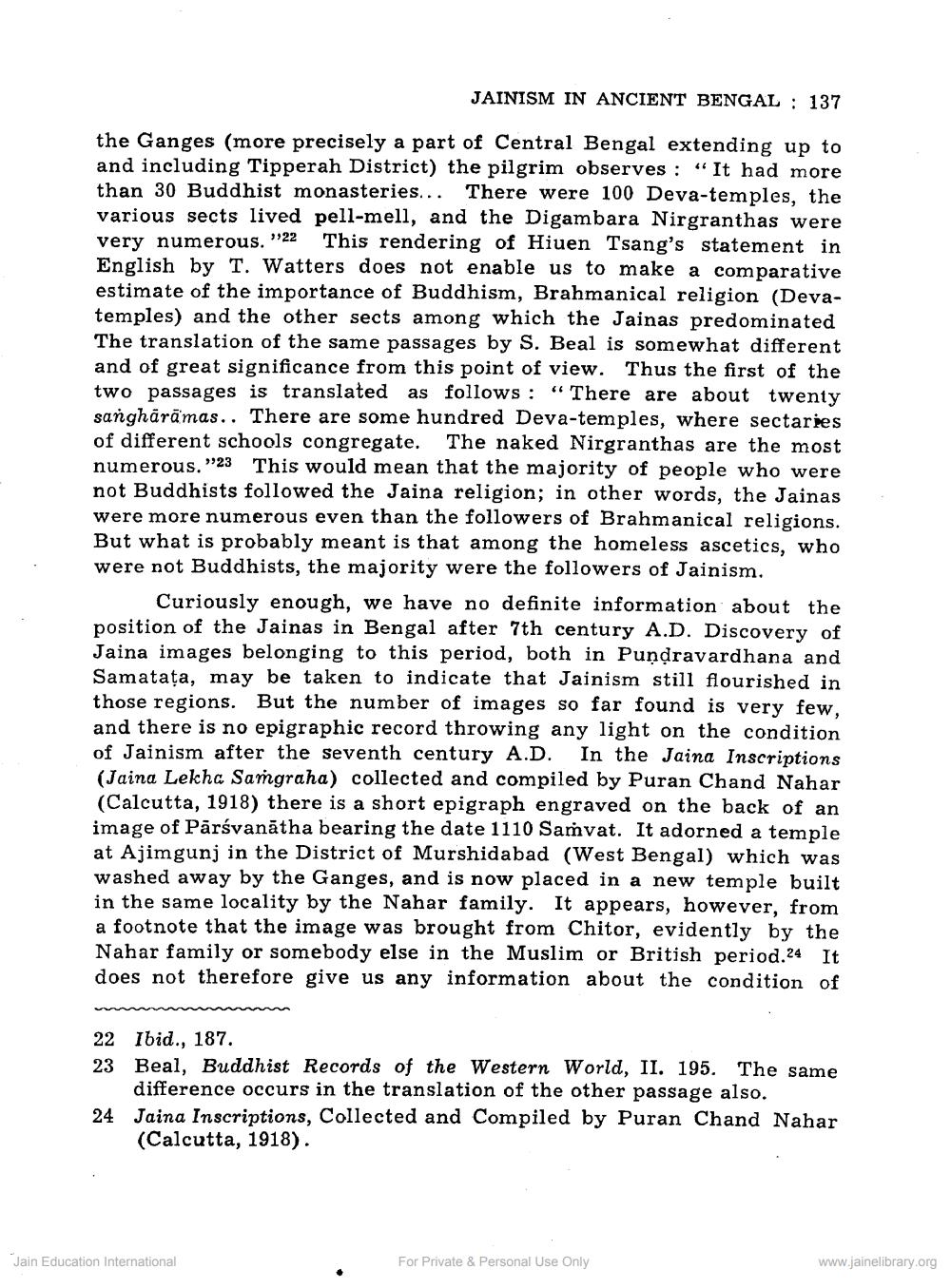Book Title: Jainaism in Ancient Bengal Author(s): R C Majumdar Publisher: Z_Mahavir_Jain_Vidyalay_Suvarna_Mahotsav_Granth_Part_1_012002.pdf and Mahavir_Jain_Vidyalay_Suvarna_ View full book textPage 8
________________ JAINISM IN ANCIENT BENGAL: 137 1122 the Ganges (more precisely a part of Central Bengal extending up to and including Tipperah District) the pilgrim observes: "It had more than 30 Buddhist monasteries... There were 100 Deva-temples, the various sects lived pell-mell, and the Digambara Nirgranthas were very numerous. This rendering of Hiuen Tsang's statement in English by T. Watters does not enable us to make a comparative estimate of the importance of Buddhism, Brahmanical religion (Devatemples) and the other sects among which the Jainas predominated The translation of the same passages by S. Beal is somewhat different and of great significance from this point of view. Thus the first of the two passages is translated as follows: "There are about twenty sanghārāmas.. There are some hundred Deva-temples, where sectaries of different schools congregate. The naked Nirgranthas are the most numerous. "23 This would mean that the majority of people who were not Buddhists followed the Jaina religion; in other words, the Jainas were more numerous even than the followers of Brahmanical religions. But what is probably meant is that among the homeless ascetics, who were not Buddhists, the majority were the followers of Jainism. Curiously enough, we have no definite information about the position of the Jainas in Bengal after 7th century A.D. Discovery of Jaina images belonging to this period, both in Pundravardhana and Samatata, may be taken to indicate that Jainism still flourished in those regions. But the number of images so far found is very few, and there is no epigraphic record throwing any light on the condition of Jainism after the seventh century A.D. In the Jaina Inscriptions (Jaina Lekha Samgraha) collected and compiled by Puran Chand Nahar (Calcutta, 1918) there is a short epigraph engraved on the back of an image of Parsvanatha bearing the date 1110 Samvat. It adorned a temple at Ajimgunj in the District of Murshidabad (West Bengal) which was washed away by the Ganges, and is now placed in a new temple built in the same locality by the Nahar family. It appears, however, from a footnote that the image was brought from Chitor, evidently by the Nahar family or somebody else in the Muslim or British period. does not therefore give us any information about the condition of It 22 Ibid., 187. 23 Beal, Buddhist Records of the Western World, II. 195. The same difference occurs in the translation of the other passage also. 24 Jaina Inscriptions, Collected and Compiled by Puran Chand Nahar (Calcutta, 1918). Jain Education International For Private & Personal Use Only www.jainelibrary.orgPage Navigation
1 ... 6 7 8 9
